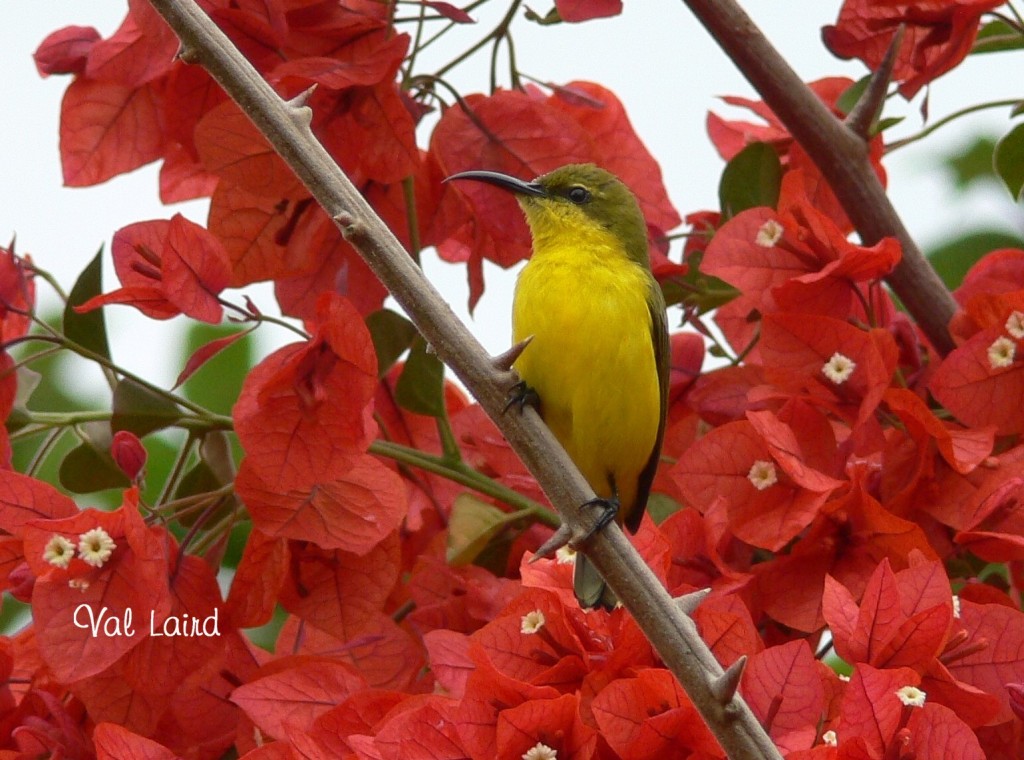Darting here and there…
- The Yellow-bellied sunbird is also known as an ‘Olive-backed sunbird’ and a ‘Yellow-breasted sunbird’ and its scientific name is Cinnyris jugularis or Nectarinia jugularis.
- Yellow-bellied sunbirds can be found from north-east Australia to south Asia, including parts of China, Philippines and Malaysia.
- The yellow-bellied sunbird’s diet generally consists of nectar, and sometimes insects.
- Yellow-bellied sunbirds are normally 11-12 cm (4.3-4.7 inches) in length, and are quick fliers and have fast beating wings.
- Yellow-bellied sunbirds are a species of sunbird and belong to the song bird family, Nectariniidae, and although they look similar to a hummingbird, they are not related.
Yellow-bellied Sunbird
Image courtsey of Val Laird
- Yellow-bellied sunbirds have a curved beak and are yellow underneath, or on their ‘bellies’, and have an olive coloured back and brown coloured wings.
- Male yellow-bellied sunbirds have an iridescent blue throat, face and upper chest.
- Yellow-bellied sunbirds build woven nests of branches and plant material, and generally include an overhanging porch.
- Female yellow-bellied sunbirds lay 1-2 green/blue coloured eggs.
- Yellow-bellied sunbirds are significant pollinators of mangrove trees, their native habitat, although they have become accustomed to human populated areas.





